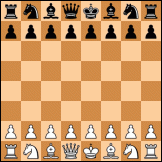Code: Select all
w l d Elo
1) 4k nodes vs 2k nodes +3862 -352 =786 +303
2) 8k nodes vs 4k nodes +3713 -374 =913 +280
3) 16k nodes vs 8k nodes +3399 -436 =1165 +237
4) 32k nodes vs 16k nodes +3151 -474 =1374 +208
5) 64k nodes vs 32k nodes +2862 -494 =1641 +179
6) 128k nodes vs 64k nodes +2613 -501 =1881 +156
7) 256k nodes vs 128k nodes +942 -201 =855 +136
8) 512k nodes vs 256k nodes +900 -166 =930 +134
9) 1024k nodes vs 512k nodes +806 -167 =1026 +115
10) 2048k nodes vs 1024k nodes +344 -83 =572 +93
11) 4096k nodes vs 2048k nodes +307 -85 =607 +79
The plot is here:

The 40/4', 40/40' and 40/120' CCRL and CEGT levels are shown, and the resulting gain from doubling in this extrapolation is ~70 points at 40/4', ~55 points at 40/40' and ~45 points at 40/120'. The limiting value I get by summing up to infinity over all doublings (infinite time control), and is 1707 points above the Houdini 3 40/40' CCRL level. So, I get 4877 Elo points on CCRL the rating of the perfect engine, similar to what I remember Don got some time ago.
The draw ratio I fitted with a shifted logistic, getting the correlation 0.999. In self play we can expect a very high percentage of draws going to very long time controls.
The plot is here:

The hardest to quantify to me was the win/loss ratio, which I somehow assumed to be constant at longer TC. It seems not to be the case, win/loss ratio seems to decrease with time control (or nodes). I fitted it with 1 + 1/(a*x + b), getting a correlation 0.96.
The plot is here:








